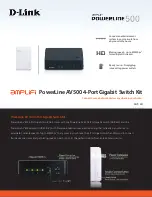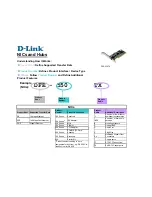
Magnum 10KG Managed Switch Installation and User Guide
07/12
28
www GarrettCom com
.
.
Address Learning
All Magnum 10KG units have address table capacities of 8K node addresses
suitable for use in larger networks. They are self-learning, so as nodes are added,
removed or moved from one segment to another, the 10KG Switch automatically keeps
up with node locations.
An address-aging algorithm causes least-used addresses to fall out in favor for
frequently-used addresses. To reset the address buffer, cycle power down-and-up.
4.2
Auto-Cross (MDIX) and Auto-negotiation, for RJ-45 ports
The RJ-45 ports independently support auto-cross (MDI or MDIX) in auto-
negotiation mode and will work properly with all the other connected devices with
RJ-45 ports whether they support Auto-negotiation (e.g 10Mb Hub, media converter)
or fixed mode at 10Mb or 100Mb Half/Full Duplex(managed switch) or not. No
cross-over cable is required while using the 10KG’s copper port to other devices.
Operation is according to the IEEE 802.3u standard.
The Managed 10KG’s Fast Ethernet copper ports can be set for either fixed
100Mb speed or for 10/100 F/H N-way auto-negotiation per the IEEE802.3u standard.
The selection is made via MNS software. The factory default setting is for auto-
negotiation. At 10Mb or 100Mb-fixed speed, the user may select half- or full-duplex
mode by MNS Software for each RJ-45 port separately. For detail information
See
Section 2.3 of this manual for information to access the “6K-MNS Software user
guide”
One frequently-used application for the Managed Magnum 10KG Switch
copper ports is to connect one of them using a fiber media converter to another Switch in
the network backbone, or to some other remote 100Mb device. In this case, it is desirable
to operate the fiber link at 100Mb speed, and at either half- or full duplex mode
depending on the capabilities of the remote device. Standard commercially available Fast
Ethernet media converters mostly do not support auto-negotiation properly, and require
that the switched port to which they are connected be at the 100Mb fixed speed.
Attachments to a 10/100 auto-negotiation port typically will not work properly. The
10KG Switch’s RJ-45 ports handle this situation by configuring the ports as per desired
through MNS software port settings and can check the port status of each port after the
change.
When Magnum 10KG RJ-45 copper ports are set for auto-negotiation and are
connected to another auto-negotiating device, there are 4 different speed and F/H modes
possible depending on what the other device supports. These are: (1) 100Mb full-duplex,
(2) 100Mb half-duplex, (3) 10 Mb full-duplex and (4) 10 Mb half-duplex. The auto-
negotiation logic will attempt to operate in descending order and will normally arrive at
the highest order mode that both devices can support at that time. (Since auto-negotiation
is potentially an externally controlled process, the original “highest order mode” result
can change at any time depending on network changes that may occur). If the device at
the other end is not an auto-negotiating device, the 10KG’s RJ-45 ports will try to detect
its idle signal to determine 10 or 100 speed, and will default to half-duplex at that speed
per the IEEE standard.
















































